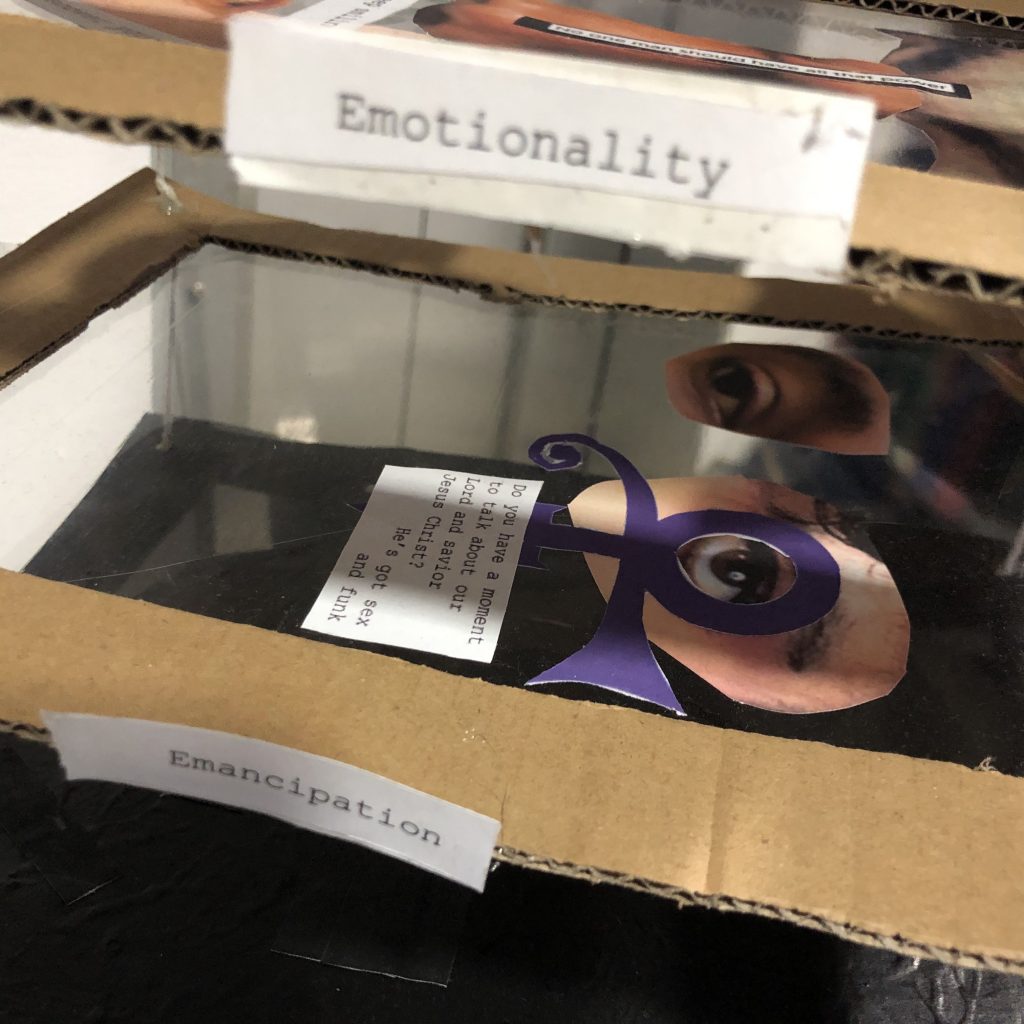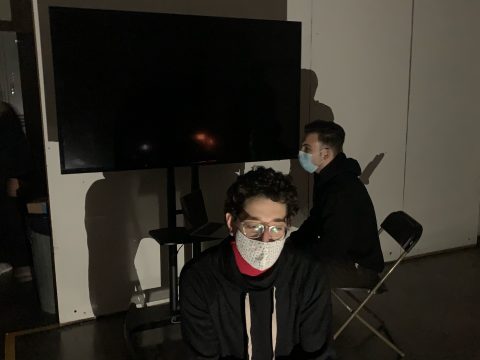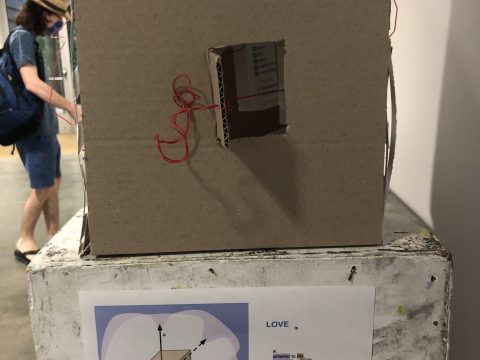This piece was created by Evan Ridgway and Simon Diesenhaus.
There is no doubt that conspiracy is mainstream. As artists, our shared interest in the vortex of social media and celebrity drew us together in search of a conspiracy of conspiracies, namely those which celebrities endorse. Celebrities of the modern era have always had conspiratorial and pseudo-reflective relationships with their fans, but social media has intensified and physicalized these webs of archetypal identification. Identity (and lack thereof) is a central aspect of paranoia and conspiracy. Celebrities, fans, and commentators all enter the pool of mass media in order to achieve clarity of self. Now, in a postmodern world, selfhood is necessarily stitched together from the shiny scraps of existent culture, particularly those which have located some traumatic or archetypal aspect missing from the contemporary narrative.

We began to play with the idea of levels for two reasons: 1. We wanted to confront our implication in the celebrity vortex, and 2. We wanted to express the increasing severity and disjointedness of certain celebrities. We noted early on that those celebrities allowed to maintain the spotlight along with their esoteric beliefs were those with undeniable artistic power. With this power comes iconic status within the economy of images. This lead us to the idea of the face as both a representative surface of marketable celebrity and also a locus of intimacy through which the artist’s personal paranoid emotions may bleed through. Once we gathered a list of celebrities with a balanced mix of captivating artistic work and problematic views, we identified their most iconic facial features. Then we stratified these features across our four layers in relation to the depth of their reach.

Once this assembly was underway, we began to dig into how the various layers and subjects of our collective face communicated and undermined each other. For example, we explored the effectiveness of Scientologist Tom Cruise’s smile in relation to Jim Carrey’s The Mask, a gap simultaneously undermined and undergirded by Carrey’s most provocative and paranoia-inducing films, not to mention his suspicion of the pharmaceutical industry. We found text to be necessary in aiding the viewers identification of the subjects as well as displaying the often-musical efficacy of their messaging. The bottom layer, which contained shadows of the images on a black background, expressed the void of meaning which frames these failed identifications. Finally, we contextualized our sculptural form through vague but prompting labels of each layer and the inclusion of a reflective surface above the face.


